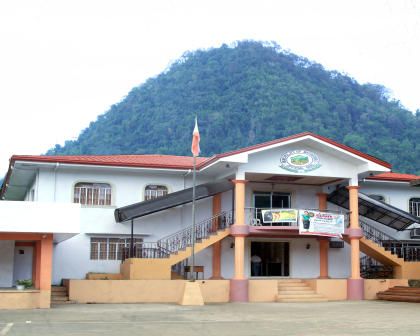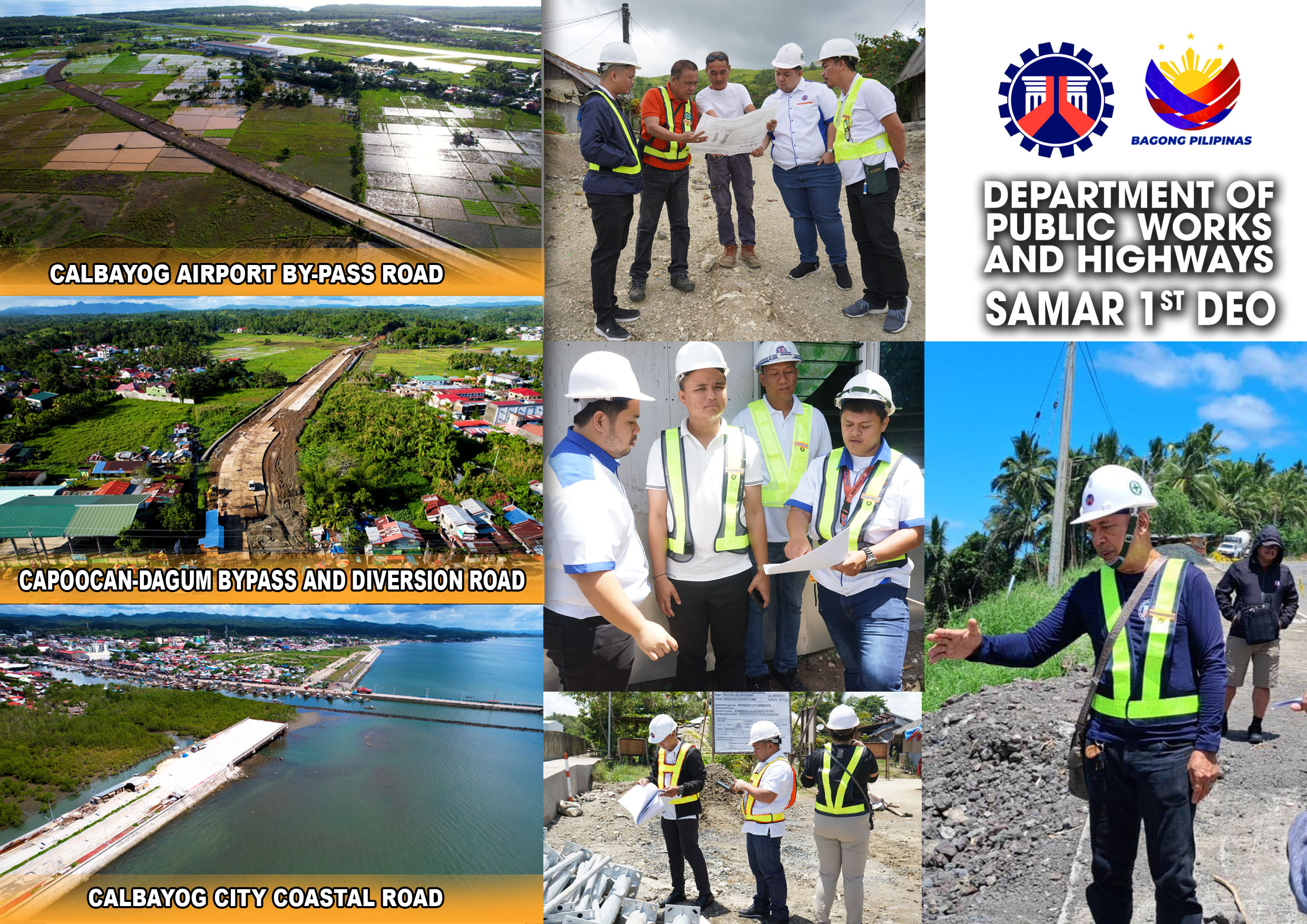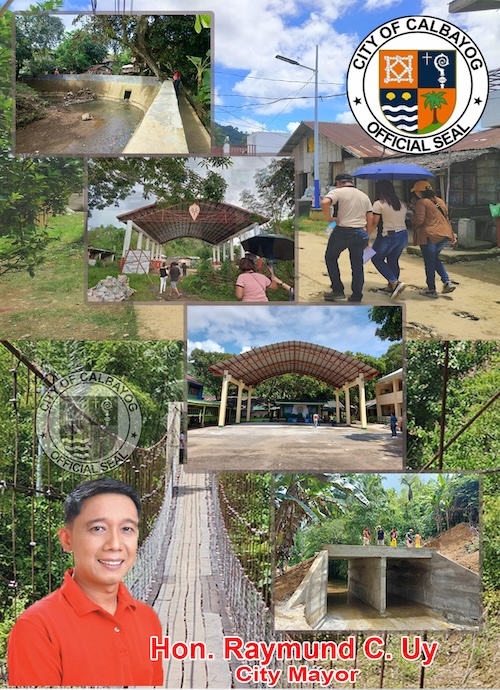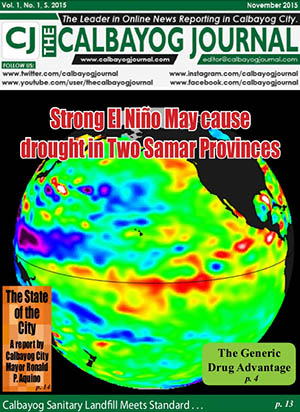
Story/Photo: ELMER RECUERDO
The late afternoon breeze is starting to get colder as 24-year-old Elenita Vocis is about to be done washing a pile of cloth diapers mostly given by her friends and relatives.
In her sixth month of pregnancy for her second child, her tummy is getting bigger but she continues to do her routine – managing the household and preparing the catch that her fisherman husband will bring for drying the following morning.
On the particular Saturday afternoon, she is also waiting for the arrival of the barangay health worker that checks on her every month. "She will bring me today my supply of vitamins as I have few capsules remaining," she said. "These are donations from the Korean government."
The late afternoon breeze is starting to get colder as 24-year-old Elenita Vocis is about to be done washing a pile of cloth diapers mostly given by her friends and relatives.
In her sixth month of pregnancy for her second child, her tummy is getting bigger but she continues to do her routine – managing the household and preparing the catch that her fisherman husband will bring for drying the following morning.
On the particular Saturday afternoon, she is also waiting for the arrival of the barangay health worker that checks on her every month. "She will bring me today my supply of vitamins as I have few capsules remaining," she said. "These are donations from the Korean government."
.png)
BRIDGING THE HEALTH CARE ACCESSS
The coastal town of Dolores is one of the 16 municipalities in Eastern Visayas implementing the KOICA Maternal Newborn and Child Health Project, a five-year project implemented in partnership with nongovernment World Vision and the Department of Health. KOICA stands for Korea International Cooperation Agency, the official development assistance agency of the Korean government.
"We believe everyone has the right to proper healthcare services. Through this project, we hope that access to proper healthcare services will finally reach many remote and underserved areas in the region," said KOICA project director Jihwan Jeon.
Romil Jeffrey Juson, project manager of KOICA MNCH Project, says the project, which started in 2021 until 2025, aims to contribute to improving maternal and child health and reducing maternal mortality.
"The main objective of the project is to improve maternal and child health services in Eastern Visayas," Juson said.
The project is implemented in the towns of Palapag, Laoang, Pambujan and Silvino Lubos in Northern Samar; San Jorge, Matuguinao, Basey and Marabut in Samar; Taft, Dolores, Quinapondan and General MacArthur in Eastern Samar; and Sta. Fe, Tabontabon, Tolosa and Pastrana in Leyte.
Juson said that since the project started, it has trained 3,848 barangay health workers on Timed and Targeted Care for Families in their conduct of home visits. The project has spent P20 million on equipment and incentives to support the BHWs.
The project has also constructed and renovated 22 health facilities, provided equipment such as incubator, ultrasound and hematology analyzer to 54 health facilities and provided 12 ambulances to local government units.
The coastal town of Dolores is one of the 16 municipalities in Eastern Visayas implementing the KOICA Maternal Newborn and Child Health Project, a five-year project implemented in partnership with nongovernment World Vision and the Department of Health. KOICA stands for Korea International Cooperation Agency, the official development assistance agency of the Korean government.
"We believe everyone has the right to proper healthcare services. Through this project, we hope that access to proper healthcare services will finally reach many remote and underserved areas in the region," said KOICA project director Jihwan Jeon.
Romil Jeffrey Juson, project manager of KOICA MNCH Project, says the project, which started in 2021 until 2025, aims to contribute to improving maternal and child health and reducing maternal mortality.
"The main objective of the project is to improve maternal and child health services in Eastern Visayas," Juson said.
The project is implemented in the towns of Palapag, Laoang, Pambujan and Silvino Lubos in Northern Samar; San Jorge, Matuguinao, Basey and Marabut in Samar; Taft, Dolores, Quinapondan and General MacArthur in Eastern Samar; and Sta. Fe, Tabontabon, Tolosa and Pastrana in Leyte.
Juson said that since the project started, it has trained 3,848 barangay health workers on Timed and Targeted Care for Families in their conduct of home visits. The project has spent P20 million on equipment and incentives to support the BHWs.
The project has also constructed and renovated 22 health facilities, provided equipment such as incubator, ultrasound and hematology analyzer to 54 health facilities and provided 12 ambulances to local government units.

REDUCING CHILD MORTALITY
Matuguinao, Samar Mayor Aran Boller said the program has helped drastically reduce the infant mortality in his municipality.
"Pregnant women no longer have to hike for hours just to have their regular checkup at the rural health unit. We now have a health facility halfway to the poblacion where they can go, Boller said. Matuguinao is a geographically-isolated and depressed municipality that was once a stronghold of communist insurgency.
Boller said the program also provided them with an ambulance that can bring patients that need immediate medical attention in hospitals.
However, while maternal and child mortality rates in Matuguinao and other disadvantaged towns in Eastern Visayas have decreased over the years, many provinces in the country are experiencing an alarming high number of infant deaths.
The Philippine Statistics Authority reported an increase in infant deaths from 14.3% in 2021 to 23.5% in 2022.
Among the contributing factors to the problem is the country's inadequate health care services due to limited resources, inadequate infrastructure, and lack of coordination among health facilities.(CJ/jmm/ER)
- Calbayog City, August 30, 2024
Matuguinao, Samar Mayor Aran Boller said the program has helped drastically reduce the infant mortality in his municipality.
"Pregnant women no longer have to hike for hours just to have their regular checkup at the rural health unit. We now have a health facility halfway to the poblacion where they can go, Boller said. Matuguinao is a geographically-isolated and depressed municipality that was once a stronghold of communist insurgency.
Boller said the program also provided them with an ambulance that can bring patients that need immediate medical attention in hospitals.
However, while maternal and child mortality rates in Matuguinao and other disadvantaged towns in Eastern Visayas have decreased over the years, many provinces in the country are experiencing an alarming high number of infant deaths.
The Philippine Statistics Authority reported an increase in infant deaths from 14.3% in 2021 to 23.5% in 2022.
Among the contributing factors to the problem is the country's inadequate health care services due to limited resources, inadequate infrastructure, and lack of coordination among health facilities.(CJ/jmm/ER)
- Calbayog City, August 30, 2024





















